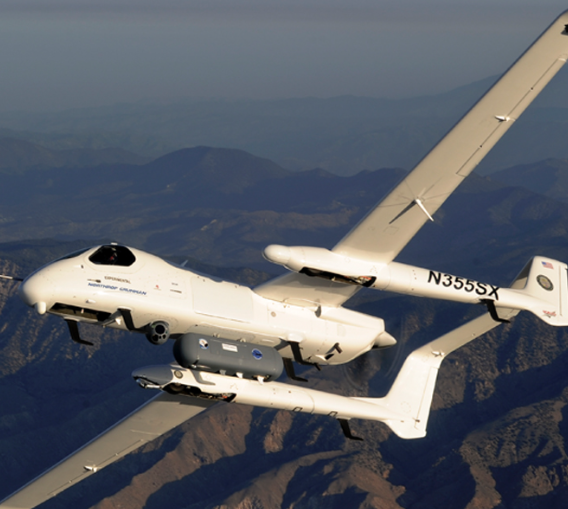Grand Sky Development Company has entered into a pair of multi-year contracts to develop a robust weather data collection system to provide precise forecasts for Uncrewed Aircraft System (UAS) operations, according to a company press release.
GrandSky entered into agreements with TruWeather, a leading provider of weather data analytics and risk management products, and Meteomatics a leader in meteorological technology and developer of the Meteodrone, a small UAS used to collect weather data. The goal of these agreements is to develop precise and comprehensive weather measurements, models and forecasts for UAS operations from and around Grand Sky.
Weather is one of the greatest risks during Beyond Visual Line of Sight (BVLOS) operations and this new GrandSky weather project will begin to reduce that risk and allow for more flight operations based on very accurate forecasts that are updated frequently.
TruWeather Solutions’ customized translation of real-time and predictive micro-weather data will allow GrandSky to predict and analyze weather phenomena detectable at one kilometer or better. Additionally, forecast services will sharpen resource scheduling, planning, and mission execution resulting in safer, more productive operations and business success.
“This will allow GrandSky to detect weather phenomena that might negatively impact flight operations that other forecasts can’t see or detect,” said Thomas Swoyer, President of GrandSky. “One of the tools GrandSky will use includes the Meteodrone, a ‘mobile micro-weather station,’ which will enable GrandSky to obtain the highest quality real-time weather insights up to 16,900 feet above the Earth’s surface that traditional weather sensing and radar cannot.”
The data collected by the Meteodrone will be incorporated into a high-resolution computer forecast model for North Dakota developed by Meteomatics that will power TruWeather’s decision analytics. According to Swoyer, current data collection and forecasting methods are not granular enough to capture weather that impacts UAS, particularly beyond-line-of-sight operations.
“Low-level winds, visibility, icing, and cloud heights can impact UAS operations regularly and our ability to know what to expect, even a few hours in the future, can make a big difference,” Swoyer said. “We are excited to bring more precise and comprehensive weather prediction to GrandSky and our partners. These improvements in accurate weather sensing will result in more flights from and around Grand Sky.”
The goal is to provide weather modeling and forecasting for aviation services at GrandSky and ultimately, across North Dakota. GrandSky expects improved accuracy of weather sensing for small and large UAS operations, including electric vertical take-off and landing (eVTOL). Traditional forecasting relies on masking gaps in weather coverage by estimating what might be there. TruWeather Solutions has focused on these weather gap challenges and compiled a constellation of novel sensors to close weather measurement gaps where satellites cannot provide adequate coverage.
“We’re flying UAS to collect data and imagery for a variety of commercial purposes. We collect imagery so we don’t have to guess about where things are and in what amounts; the same should hold true for weather,” Swoyer said. “We need to fly UAS to support accurate data collection to create very accurate forecasts. Meteodrone gives us the opportunity to collect a lot of weather data many times a day to constantly improve the forecast, which is a key advantage over traditional weather balloon launches. UAS operations can be very easily disrupted by weather. In North Dakota we see fronts moving across the area that produce high winds in one location but just nine miles away, the air is still. We need to be prepared when launching and flying BVLOS.”
“We appreciate the partnership with Grand Sky to provide cutting edge weather forecasting consultation to help with flight decision making, safety and scheduling,” TruWeather Solutions CEO Don Berchoff said. “Over the next several months we will work together to roll out the customized user interface, conduct drone application testing, and execute to close micro-weather data gaps, reduce uncertainty and risk of each operation which leads to enhanced safety-of-flight and repeatable large BVLOS operations.”
For more information visit:




